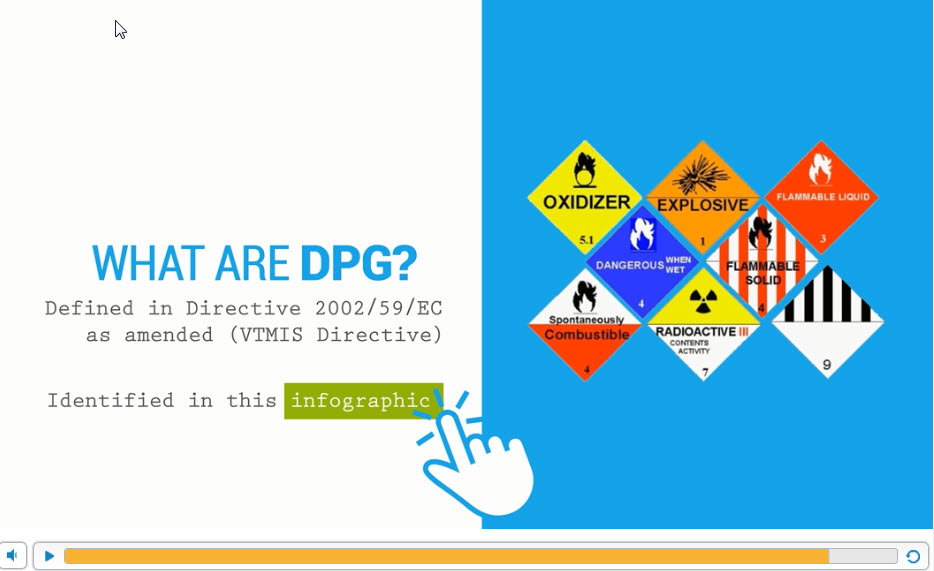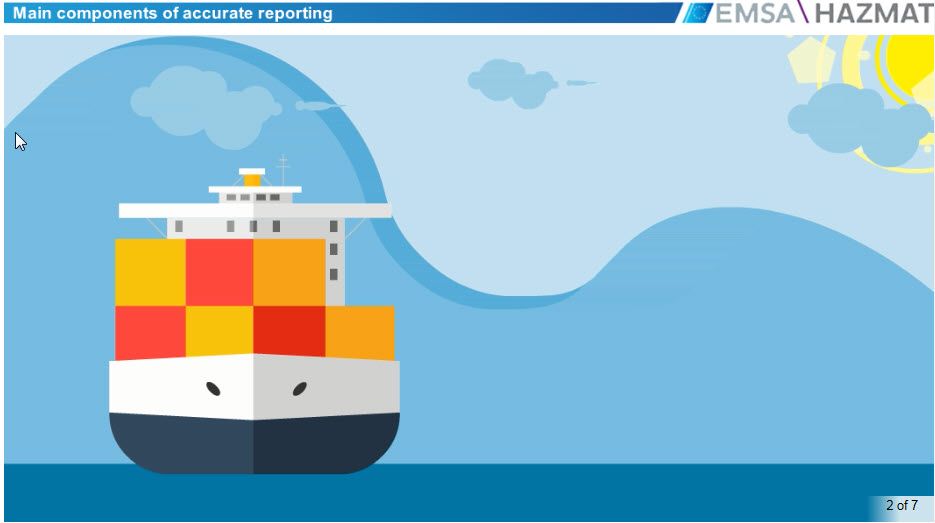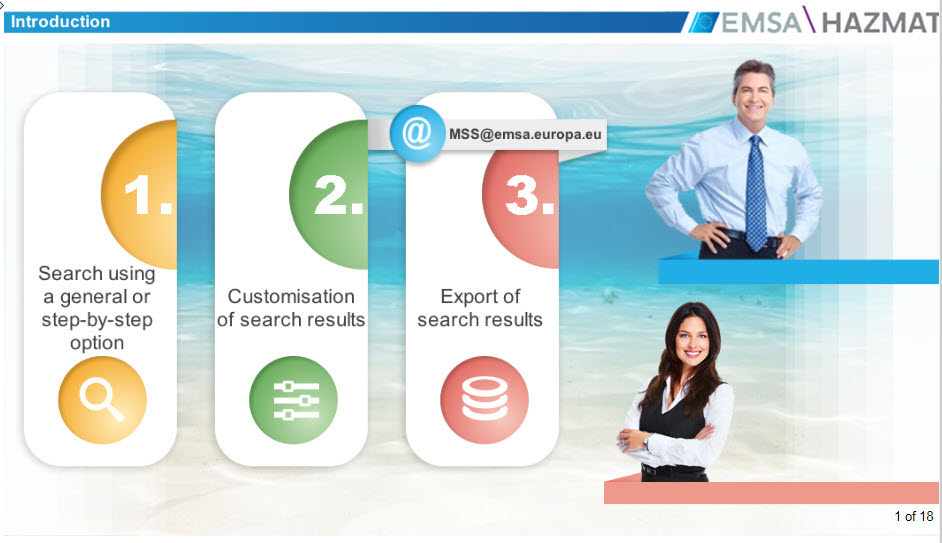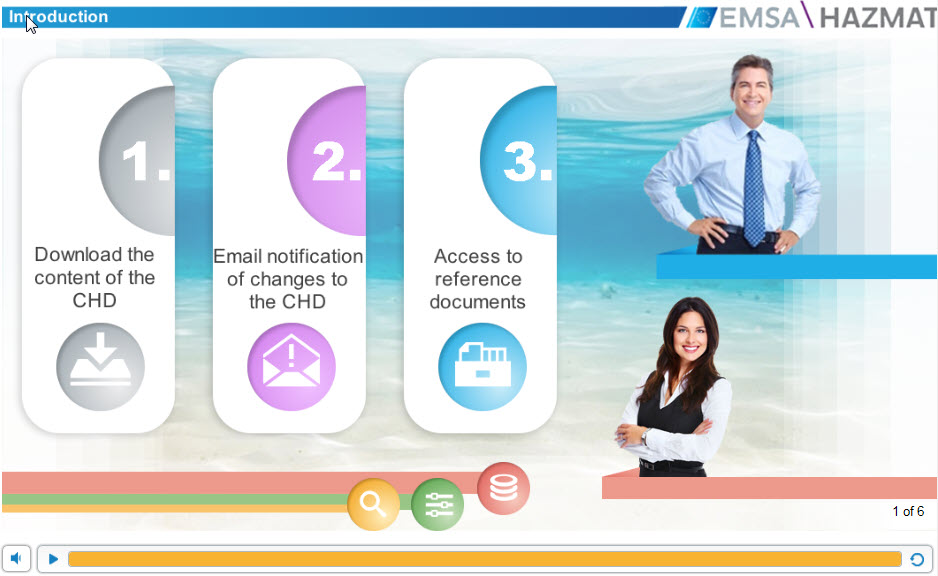Reporting of HAZMAT in SafeSeaNet
Background
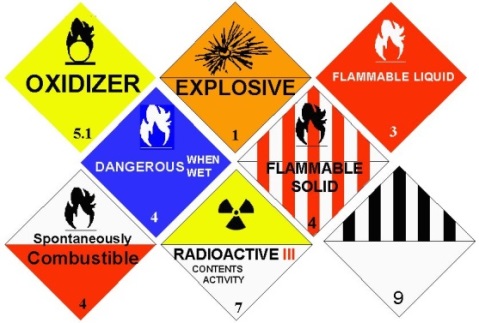 A number of major accidents have occurred over recent years around European Union coasts, raising questions regarding the accuracy and the level of information in dangerous and polluting goods (HAZMAT) reports. Information on dangerous and polluting goods is essential when allocating and providing incident response measures. How best to ascertain that this information is complete, accurate and available on time, as established in Directive 2002/59/EC, is therefore a major concern. In order to address this issue, the High Level Steering Group meeting agreed to take a number of measures for improving the quality of information on dangerous and polluting goods in SafeSeaNet. These initiatives are described below:
A number of major accidents have occurred over recent years around European Union coasts, raising questions regarding the accuracy and the level of information in dangerous and polluting goods (HAZMAT) reports. Information on dangerous and polluting goods is essential when allocating and providing incident response measures. How best to ascertain that this information is complete, accurate and available on time, as established in Directive 2002/59/EC, is therefore a major concern. In order to address this issue, the High Level Steering Group meeting agreed to take a number of measures for improving the quality of information on dangerous and polluting goods in SafeSeaNet. These initiatives are described below:
Guidelines on reporting HAZMAT in SafeSeaNet
Proper reporting to SafeSeaNet does not depend only on information provided by the shipping industry but it also depends on the quality of information that is provided by manufacturers and shippers to ship data providers. In other words, correct information can only be guaranteed if the source information is correct. The Guidelines can serve as a quick reference document for reporting parties and authorities and can be used during training sessions to enhance the awareness on the importance of correct reporting.
The Guidelines address issues related to who, why, what, when, where and how to report dangerous and polluting goods information. It is important that reporting parties know exactly how dangerous and polluting goods are carried on board ships and from where to obtain the correct information. Figure 1 demonstrates which International Maritime Organization (IMO) Code or Convention to use by starting from the mode of carriage; that is, how cargo is being carried (bulk or packaged) and by type of cargo (liquid, gas or solid). This explanation should lead to the use of the correct IMO Code or Convention.

The Guidelines also include topics which further ensure good quality data in the SafeSeaNet system: validation options, available training opportunities and use of incident reports for exchanging information on non-compliance in dangerous and polluting goods notifications.
Central HAZMAT Database (CHD)
The use of a central database has the advantage that data is harmonised and avoids inconsistencies. The CHD (previously referred to as the Common Hazmat reference database (CHRD)) is intended to support Member States and industry during the reporting process by identifying the correct data.
Based on requirements developed with Member States and industry representatives, EMSA developed a Central Hazmat Database which incorporates a list of dangerous and polluting goods that have to be notified in accordance with Directive 2002/59/EC, as amended, and IMO FAL Form 7, taking into consideration the relevant data elements from the IMO Conventions and Codes. In also includes a link to the relevant entries in the MAR-CIS database, which is being developed by EMSA and includes information on associated hazards and risks of dangerous and polluting goods. The objectives of the CHD can be achieved if it is used as a reference and a verification tool, both at national and Union level, during the reporting process.
The CHD is accessible to all SafeSeaNet users as well as industry stakeholders and the general public (the latter two are referred to as guest users) via the EMSA Maritime Application Portal (MAP). SafeSeaNet users can access MAP using their credentials. Guest users, who do not have all the functionalities as SafeSeaNet users, should use the following access credentials: User name – CHDguestuser - and Password – EMSAchdguest1.
Leaflet
A leaflet based on the Guidelines on Reporting Hazmat in SafeSeaNet was developed in order to provide a short and an easy guide to users. It can be used during training sessions, workshops or seminars. It is available from EMSA both as a hardcopy and as a soft copy on its website.
Training
Training materials on reporting dangerous and polluting goods information in SafeSeaNet have been developed and provide an opportunity for Member States authorities and industry stakeholders to cooperate and organise joint training sessions at national level. EMSA is ready to assist in the organisation and delivery of this training.
e-Learning: Reporting HAZMAT in SafeSeaNet with the Central Hazmat Database
A short e-Learning course on reporting dangerous and polluting goods in SafeSeaNet is available on this web page. This course provides training on how to use the Central Hazmat Database (CHD) to support the accurate reporting of dangerous or polluting goods information in SafeSeaNet. The course is aimed at SSN National Competent Authorities, port, maritime and pollution response authorities in Member States. The course may also be of interest to industry stakeholders and ship data providers to the National Single Window (NSW) such as ship operators, agents, masters. The course is divided into four parts that should be followed in sequence. The total duration of the course (four parts) is about 30 minutes.

